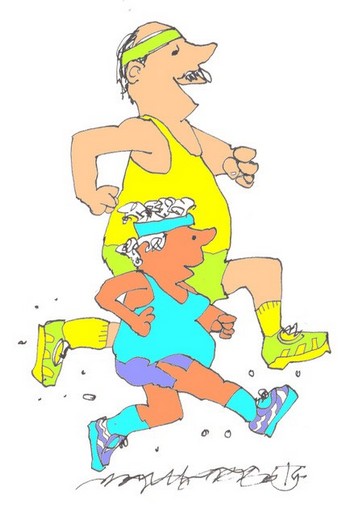WHAT IS PHYSICAL FITNESS?
Physical Fitness and Lifespan
The American Heart association has declared that for middle aged people the level of physical fitness is the best predictor bar none of life expectancy. Now a Mayo Clinic Proceedings editorial has discussed the importance of physical fitness for longevity and concluded that high levels of fitness increase lifespan regardless of levels of adiposity. I will discuss these findings soon but first a few words about what physical fitness means.
What is Physical fitness?
There are several aspects of physical fitness including aerobic capacity, strength, flexibility, balance, coordination, agility etc. My interest, and therefore what my Blog is all about, is aerobic fitness, otherwise known as cardiorespiratory fitness. Wikipedia defines it thus: “Physical fitness is a state of health and wellbeing and, more specifically, the ability to perform aspects of sports, occupations and daily activities”. The central fact about aerobic fitness is that it reflects and depends on the body’s uptake and use of oxygen. The gold standard of measurement of physical fitness therefore is the maximum ability of the body to take up and use oxygen.
The role of oxygen
For a muscle to work it needs energy and energy requires fuel. The biochemical processes which fuel muscle contraction are immensely complicated – much too complicated to go into in detail here – except for the contribution of oxygen (O2). Oxygen is an essential ingredient in the metabolic conversion of various energy substrates (sugars, fats etc) into action – in other words muscle contraction. The supply of oxygen to, and use by, the working muscles is the limiting factor in deciding how much work those muscles can perform during aerobic exercise.
Oxygen is absorbed from the lungs and transported around the body in the blood stream, supplying the various organs which need oxygen to maintain life – the brain, heart, kidneys, gut, liver and muscles of respiration. There the oxygen is taken up by the local cells. The rate of consumption at rest of the average 70kg (11 stone) man is about 250ml of oxygen per minute but varies with the weight of the individual. When adjusted for weight, the oxygen uptake is about 3.5ml of oxygen per minute per kilogram of body weight. This is also known as one metabolic equivalent or 1 MET. Remember the MET – it is an extremely important measure of exercise intensity.
Maximal oxygen uptake (VO2max)
When we exercise, our muscles need more oxygen and this is provided by breathing faster and by the heart pumping more blood to them. There is a straight line relationship between muscle work and oxygen uptake (abbreviated as VO2) until the point at which no more oxygen can be absorbed and pumped round the body. This is the point of maximum oxygen uptake, or VO2max, measured as millilitres of oxygen used per minute for each kilogram of body weight – ml/min/kg. Further exercise can only continue with anaerobic (not using oxygen) metabolism. This is fueled by stored energy sources in the muscles which quickly become used up. Anaerobic exercise can therefore only be continued for a very short period.
That’s about enough for today’s class. Next time I will describe the relationship between oxygen uptake and physical fitness.
Subscribe to the blog
Categories
- Accelerometer
- Alzheimer's disease
- Blood pressure
- BMI
- Cancer
- Complications
- Coronary disease
- Cycling
- Dementia
- Diabetes
- Events
- Evidence
- Exercise promotion
- Frailty
- Healthspan
- Hearty News
- Hypertension
- Ill effects
- Infections
- Lifespan
- Lipids
- Lung disease
- Mental health
- Mental health
- Muscles
- Obesity
- Osteoporosis
- Oxygen uptake
- Parkinson's Disease
- Physical activity
- Physical fitness
- Pregnancy
- Running
- Sedentary behaviour
- Strength training
- Stroke
- Uncategorized
- Walking



This will keep us moving!